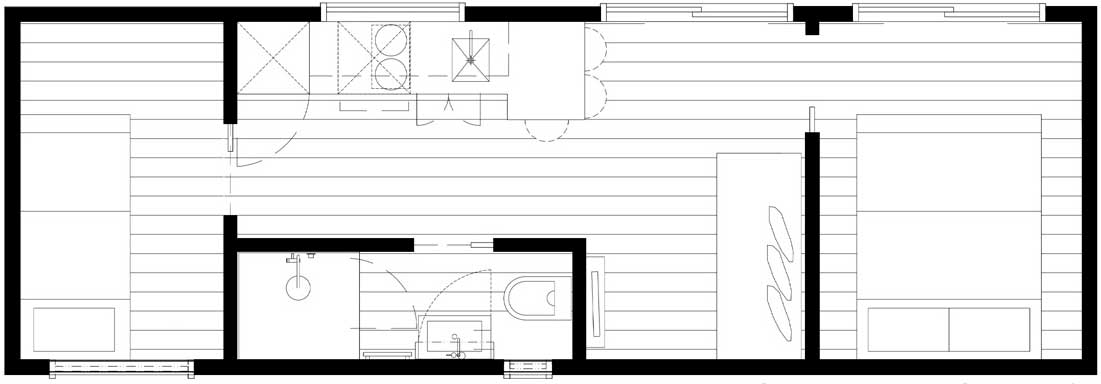It began in 2002 but it was not the time
In 2002, Ruth Makuini Tai held a hui at Tapapa Marae to explore rebuilding their kāinga that fell to ruins as the young moved to the cities. The young returned for the hui, but faced two obstacles:
- They would need a home for their families on day one
- Leaving good jobs in the cities, they would need to earn a living.
It was too early. But today…
- Housing: Factories make wharepuni in two weeks. Installed on site in two hours, cost under $100,000 or lease to own under $450/week.
- Income: Broadband means many can work anywhere.
What is needed to get started?
Understand leadership in tino rangatiratanga
A kāinga is a traditional form of community in which people develop psychological bonds due to the common interests of the members and their contact in everyday life. It operates under tikanga, not out of nostalgia, but because it works better. Governance is by hui, chaired by a rangatira. Leadership is not by election but by acknowledgement of expertise. The expert waka builder leads construction of the waka, but when launched, navigation is by the expert navigator. The rangatira is the one who weaves the people into the harmony of a choir. The one who listens to what everyone has to say and then puts forth a way forward. In respect to the rangatira’s mana, the hui accepts the resolution.

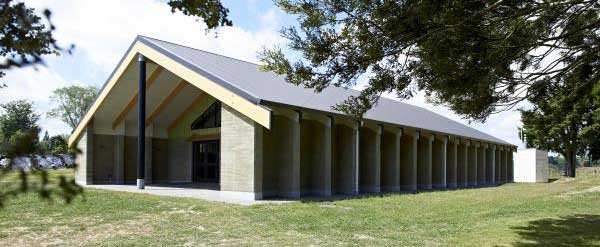
Establish the intent for Kāinga
Read this page on the role of kāinga within Te Tiriti. It is of utmost importance you understand what you propose to do is specifically cited as central to Te Tiriti.
- Hui: Call a hui of all who wish to live in the kāinga. This includes members of the whanau and hapū, but also note Te Tiriti specifically includes nga tangata katoa o Nu Tirani (all the people of New Zealand). This means one does not have to be a blood descendent of the hapū to be a part of the kāinga.
- Agree how the hui will govern, acknowledge the rangatira, and how the Crown and its local government subsidiary will be informed.
- Resolve to rebuild the kāinga. In many cases, the land will still be there, it may have a fenced marae with wharenui, wharekai and marae atea, but unlikely to have the wharepuni (small family homes) of the kāinga.
- Boundaries: If marae land is not large enough, engage with the owners of the neighbouring land who may be of the hapū.
- Stake it out: Get some posts and flags and layout the design. Then reduce it to paper or on a computer design.
- Begin: Organise how to acquire wharepuni and whare whaihanga so you can get to work. Develop a three-water plan. Sort power if it is not there. And if the council is not maintaining the roads, get them fixed.
- Broadband: If you do not have high speed broadband, take advantage of programs that provide funding such as RUC. In the past it was difficult, but now, the option of Starlink means broadband anywhere.
- Funding: Wharepuni are available on lease-to-own contracts that can be committed by the whanau or hapū who then contract with the family who will live in it. Hapū and Iwi Trusts may have Treaty settlement funding that would be appropriate. The new government (Nov 2023) may be looking for a better alternative than that put forth by the 6th Labour Government. Talk to your M.P. But whatever you do engaged with the Crown, be cautious about ceding tino rangatiratanga.

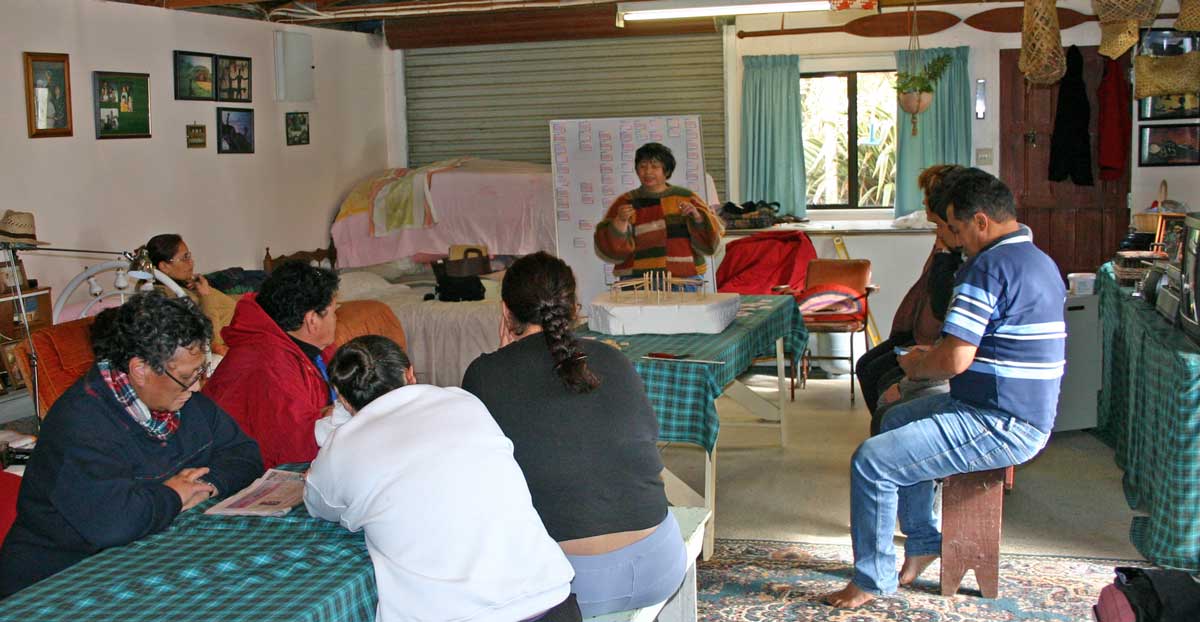

Wharenui and Whare Whaihanga
If you don’t have a wharenui, commit to building it, but in the meanwhile consider buying a large marquee tent from China as the first whare whaihanga. They can be purchased for about $10,000 and if properly anchored should hold up in NZ storms.
The carved wharenui is an important acknowledgement to ones ancestry, but it costs money, takes time and requires skills your hapū may need to redevelop. There are now enough skilled carvers to provide training, but make this a medium-term project, not the first.
Remember, He aha te mea nui o te ao? He tāngata!, so the top priority is to get your people back on the whenua, in warm, dry, adequate housing with good income so they can focus on rebuilding kāinga. It will take time, but housing and income are the first steps.
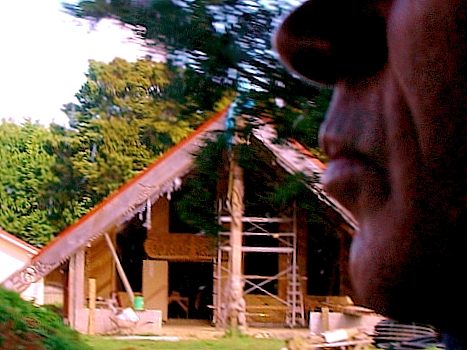
Wharepuni
Begin with the wharepuni so the whanau have a place to stay to begin restoration of kāinga. Wharepuni can be purchased, leased or leased with an option to purchase (LOP). With LOP, if the tenant pays the rent on time for 6-7 years, they gain ownership at the end of the lease. They can continue to live in the wharepuni rent free, or they can sell it to raise funds for deposit on a first home. It is preferred if lease contracts are signed by the hapū or whanau or trust, rather than the individual.
Contact Eric Chase of Renaissance Aotearoa Foundation who provides the wharepuni services.
Eric will open a dialogue with the whanau, hapū or trust that will guarantee lease, and once the paperwork is complete, will arrange for delivery and installation. Preparation includes working out the best solution for water, wastewater and power.
Workshops on how to establish a self-supporting local economy will be run in parallel with the preparation for warepuni. If grants are available to erect workshop buildings, that is the best. But if not, the whanau may consider purchasing an instant, pop-up workspace until the local economy can support permanent structures.

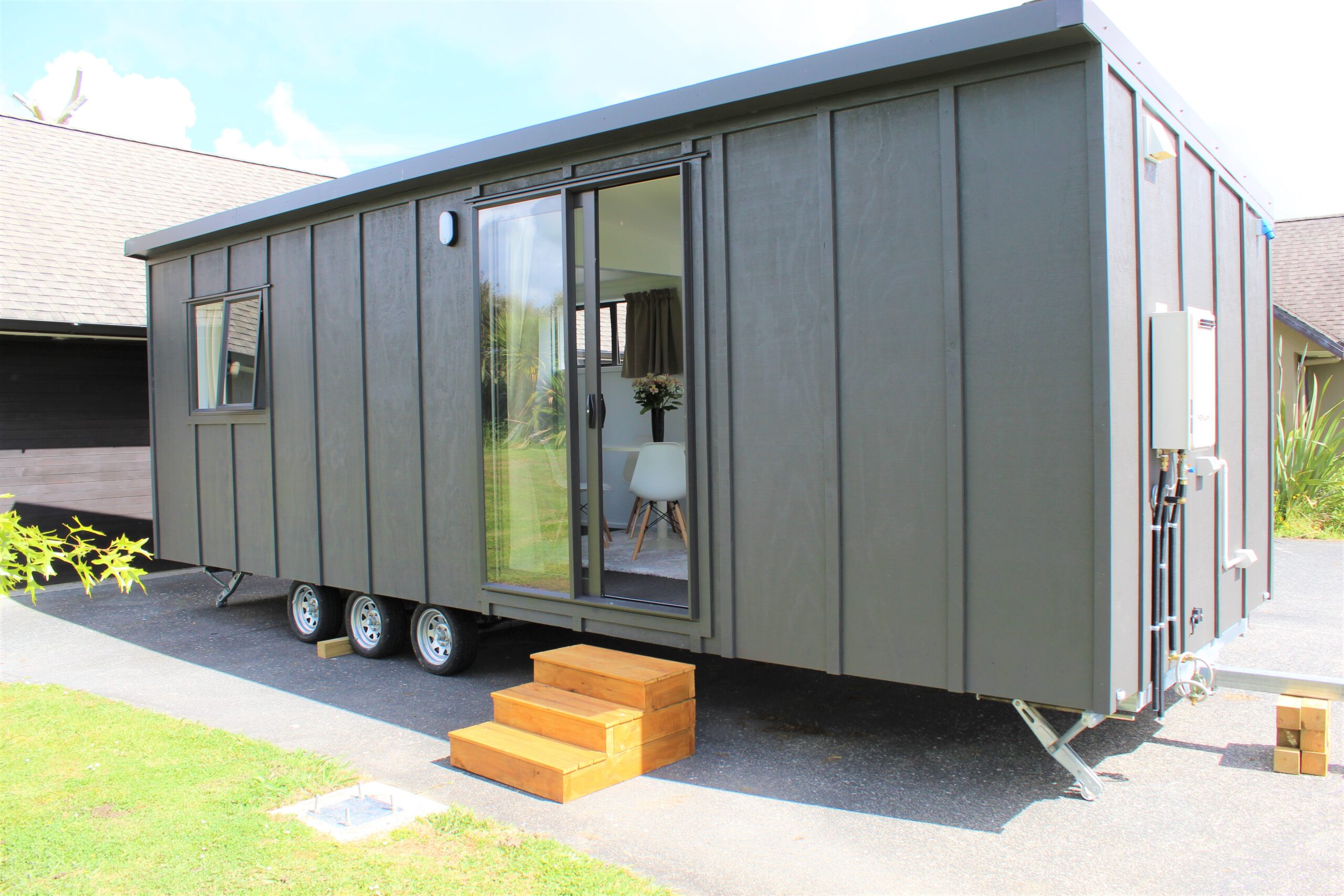
Suggested Site Plan
This to-scale drawing requires less than a hectare of land. It respects noa and tapu and follows the traditional form of a kāinga. It is a starting point, not a prescriptive plan. Individual whanau are encouraged to adjust it to serve both their needs and numbers.
Workplaces: The whare whaihanga were traditionally divided into weaving and carving, but in the 21st century, these can be offices, factories and other commercial establishments that may require different placement.
Education: In setting out your whare whaihanga, remember role modelling for the children. Segregation of adults from children is unnatural. It is a product of German industrialisation when the Kaiser began to open schools called Gymnasium to educate the young to address “the demands of the present”, meaning provide skilled workers for the emerging factories. The Industrial Revolution is over. Your young do not need to be trained to be factory fodder. Thus, in selecting the location of Kura and adult workplaces, consider proximity.
Access: At the same time, consider truck access. Keep trucks outside kāinga boundaries. If they are needed to deliver and collect goods, provide road access directly outside the kāinga walls, or make the outer wall of the whare whaihanga part of the kāinga wall, with a delivery door.
Autonomy: This layout does not provide for food growing. For a self-supporting local economy, as well as improving whanau health, a year-round supply of healthy and affordable food is critical. Consider investing in freeze-dryers to store the harvest (for up to 20 years retaining 97% of nutrient value). Also consider investing in sufficient solar panels and battery storage to free the kāinga from the ever-rising cost of electricity. As part of this investment, the whanau may consider abandoning privately-owned motor vehicles, and instead implementing a motor pool so less personal capital is tied up in transport costs. Remember, it is always cheaper to save a dollar than it is to earn one. Lowering the cost of living goes much further than having to earn more to enjoy a comfortable standard of living.
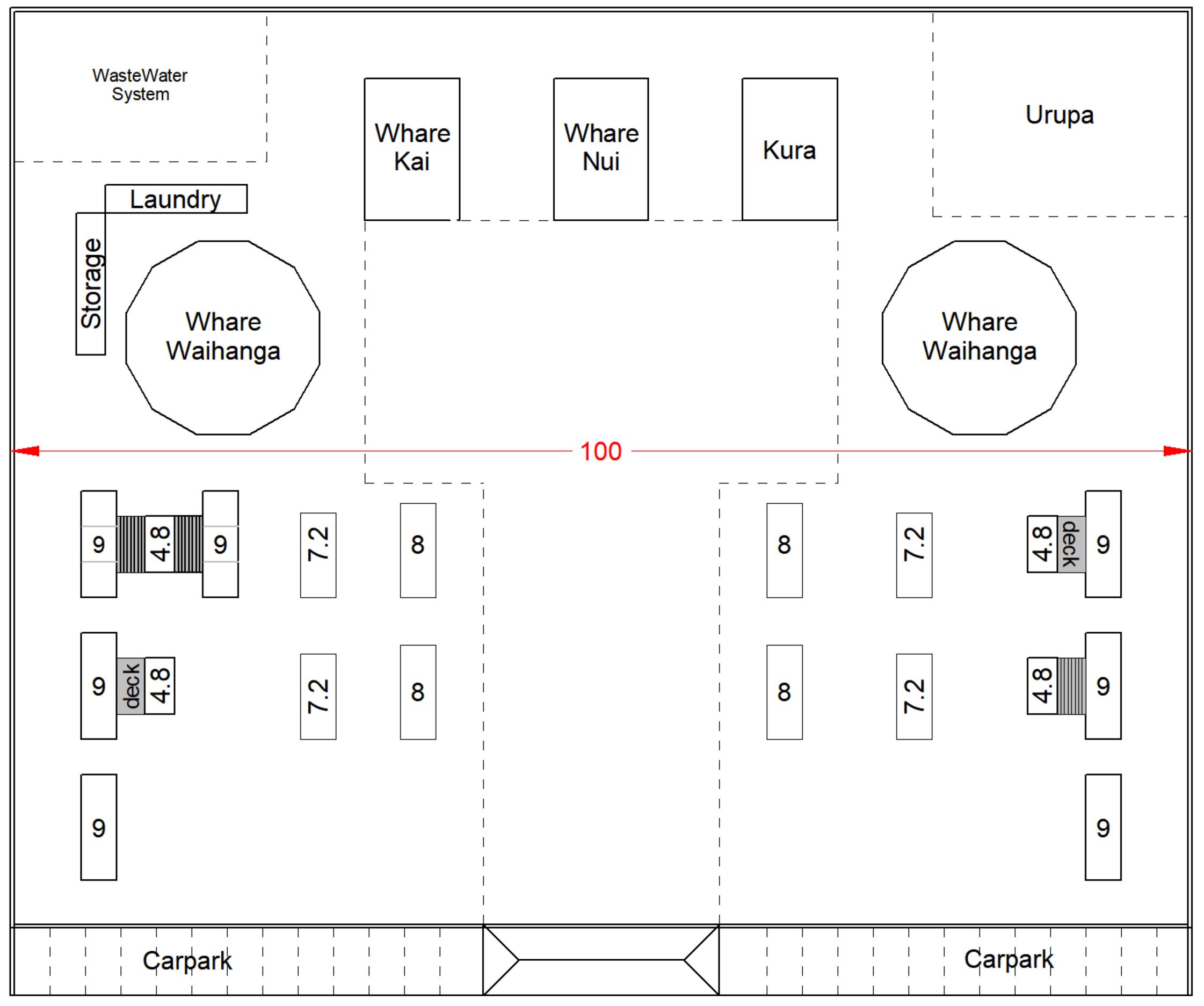
Typical Floor Plans for Wharepuni
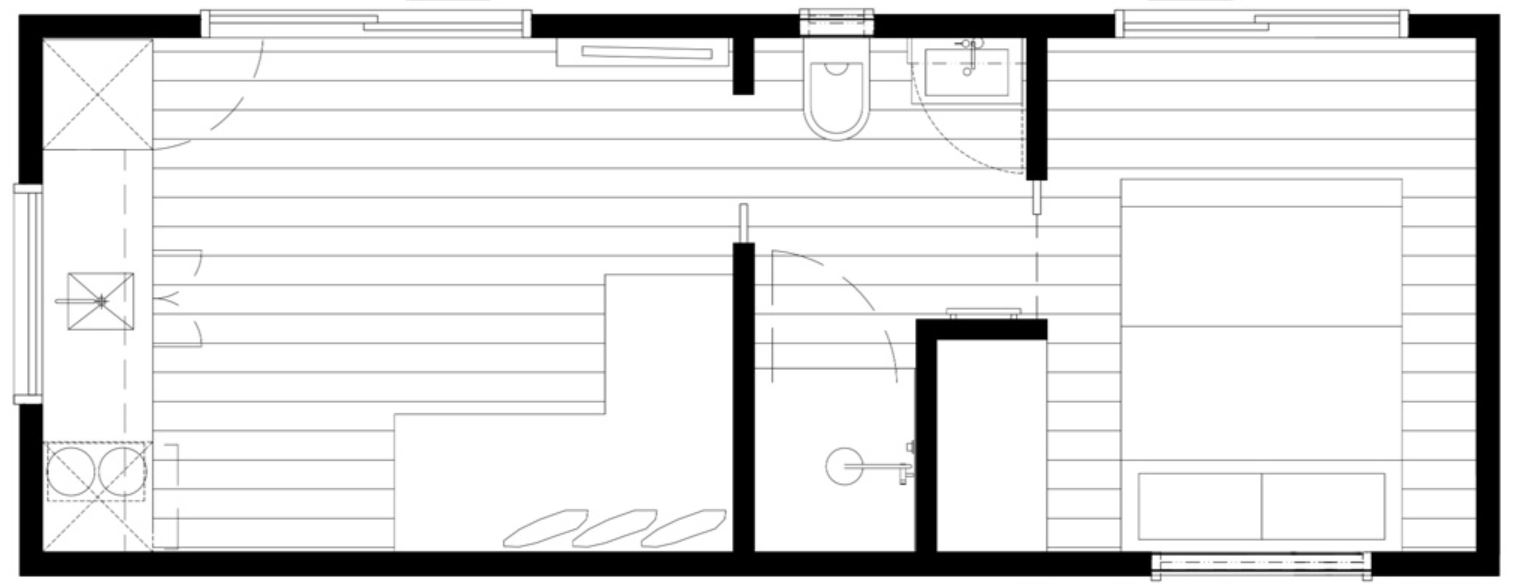
8×3
9 x 3
